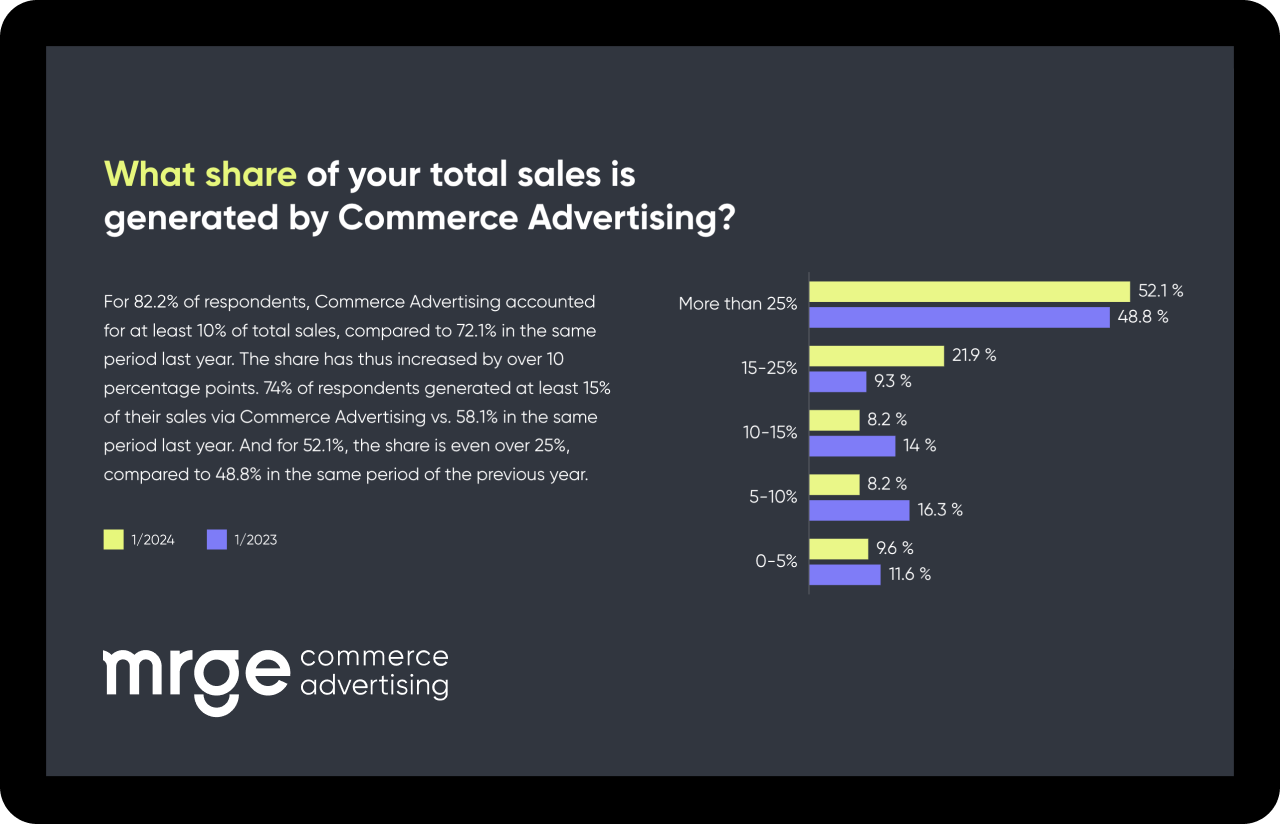Key Take Aways
Executive summary: 5 key take-aways for quick readers
- The living segment offers significantly higher commission payments.
- The purchase decision has often already been made. The only question is when and where.
- Brand awareness is negligible in the living sector.
- The market is highly competitive due to comparable product ranges.
- People are seeking guidance and inspiration.
Commerce Advertising in the Living Sector: High Value, Targeted Success, and Brand Opportunities
The average shopping cart values in the living sector are significantly higher than in other verticals. To be precise, the average order value in the home and furniture sector was $235 in February 2023 – the best value in the industry, far ahead of fashion and accessories with an average of $138. It makes a difference whether a customer buys clothing or invests in a new couch or dining table. However, this also means that publishers can expect higher payments, regardless of the billing model.
Moreover, the living sector offers a unique advantage in reaching customers further down the sales funnel compared to other industries. Many individuals searching for furniture online have already made the decisive choice to make a purchase, with spontaneous purchases being more of an exception. This favorable scenario enhances the chances of success for both advertisers and publishers, ensuring a more receptive audience for their marketing efforts.
Despite the informed purchase decisions in this sector, the decision-making process isn't necessarily shorter, particularly when it comes to furniture. The significance of such investments, coupled with their high costs, prompts customers to exercise careful consideration in making their choices, impacting their homes in significant ways. This extended decision-making period presents an opportunity for publishers and advertisers alike to increase awareness of their content and offers, engaging potential customers with valuable information. Brand awareness, particularly within the low-price segment, is comparatively lower in the living sector. Customers tend to prioritize the price-performance ratio over brand loyalty when selecting items like couches. This makes Commerce Advertising an ideal avenue for smaller and new players to achieve high visibility across various channels and ad formats, leveling the playing field and offering a chance to compete with established brands.
Leveraging Commerce Advertising presents immense opportunities for advertisers to manage and optimize their advertising activities effectively. Particularly with the help of a Commerce Advertising platform like mrge, product categories can be weighted and prioritized differently. In this way, product categories, product groups, or individual bestsellers can be pushed in terms of visibility and sales. The high diversity of different user touchpoints allows an optimal traffic mix to be put together that is tailored to the retailer’s goals and product ranges.

3 benefits that Commerce Advertising can offer advertisers in the living sector
- The living sector is a very tough place. Individual, large retailers such as OTTO, IKEA, and XXXLutz dominate the e-commerce market. That’s why there’s no alternative for any other players, especially medium-sized companies, but to rely on Commerce Advertising and, above all, to find the right publishers for themselves in order to be visible and competitive with the competition at all possible user touchpoints.
- In the living area, the average shopping cart value among retailers can differ significantly. This variation is due to some focusing more on high-priced furniture, while others prioritize additional categories like home accessories alongside furniture. To ensure effective cost management, it's crucial to align expenses with generated shopping cart revenue or brokered sales. Commerce Advertising proves particularly successful in this regard, as it enables precise analysis of campaign touchpoints to identify areas where user conversions are strongest, allowing for efficient campaign targeting.
- As previously mentioned, brand awareness holds secondary importance in the living sector. The reason behind this lies in the prevalence of the same product lines or collections available across various retailers. To stand out, it becomes essential for them to discover other unique selling propositions, such as swift delivery, free delivery, installation services, price discounts, or smart voucher marketing. Ideally covered by a Commerce Advertising campaign.

3 benefits that Commerce Advertising can offer publishers in the living sector
- Due to the often-high shopping cart values, publishers in the living sector can also earn attractive commissions. For this to work, it is important that they provide users with advice throughout the entire customer journey. In the beginning, users are primarily looking for content to inspire them in their furniture search, while later, they are primarily interested in comparing the conditions at different retailers (delivery times, additional services, prices, etc.).
- It is important to use innovative content formats across all topics and channels – including in the living sector. One example is the integration of AR applications (“augmented reality”), which allow users to virtually project furniture of interest to them into their own homes. This offers them real added value and thus represents an attractive environment for advertisers. In the USA, 20 percent of 18- to 34-year-olds already use or have used AR and VR solutions when shopping online. 42 percent are generally interested.
- Especially when it comes to the topic of living and furnishing, people are looking for information and advice. Publishers have to offer users well-founded decision-making support, provide them with answers to questions such as “Where can I find the best price?” and “Where can I get the best service?” and at the same time generate as many sales as possible with the respective partner. In a B2C survey, for example, 31 percent of respondents cited free shipping as one of the main reasons for ordering furniture online; 48 percent cited the uncomplicated ordering process.
Particularly in the furniture business, advertisers should position themselves with a diversified traffic mix
When it comes to furniture and home accessories, people make the decision whether to buy something quite quickly – but after that, there is a longer process ahead of them, involving many different aspects such as delivery time, set-up services, and price. Advertisers need to distinguish themselves from the competition on precisely these points – and that’s exactly what Commerce Advertising is ideally suited for. mrge, with its shopping24 entity, has a very strong presence in the living sector and can assist in mediating between publisher and advertiser as well as in subsequent ongoing campaign optimization.

















